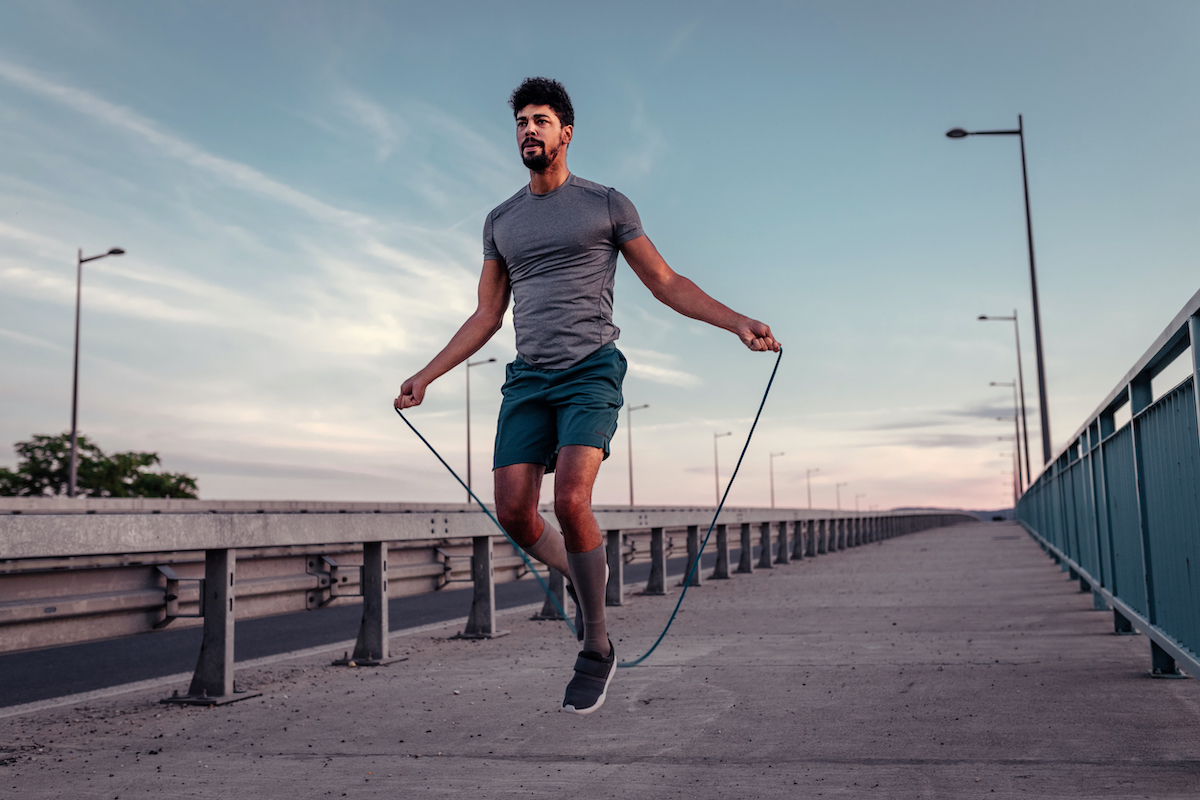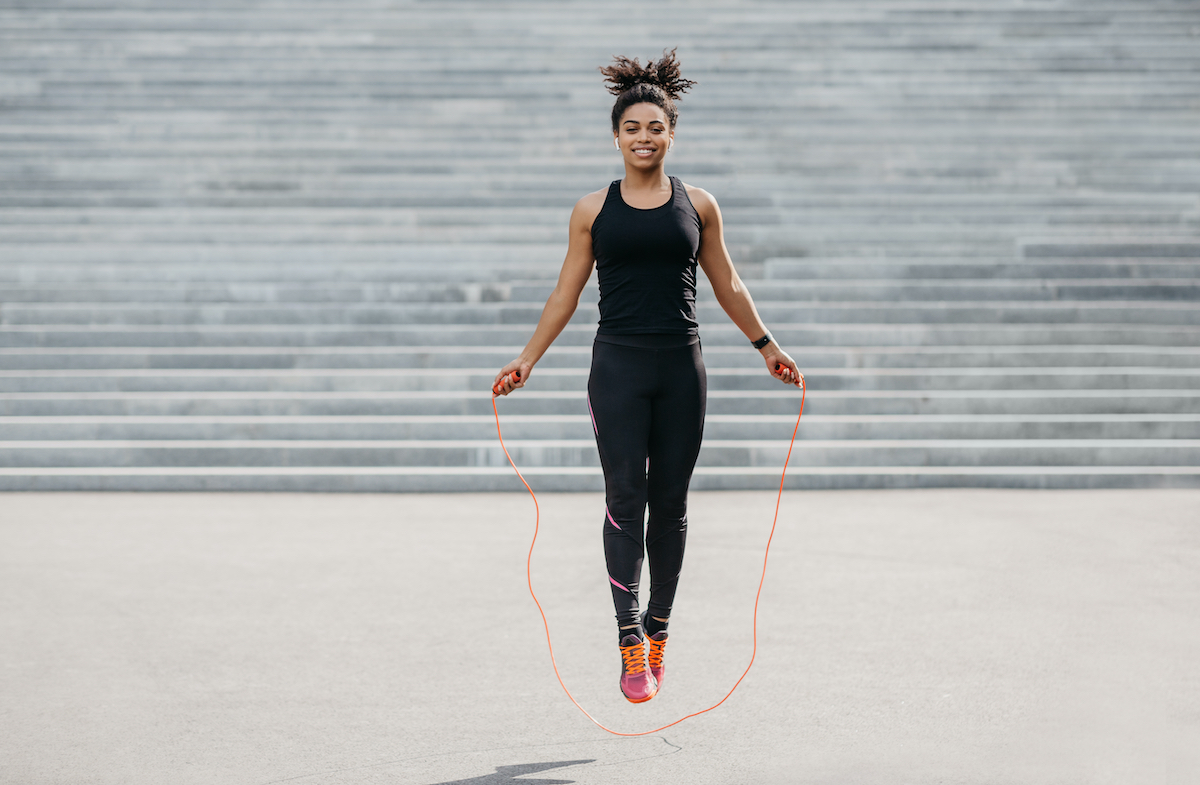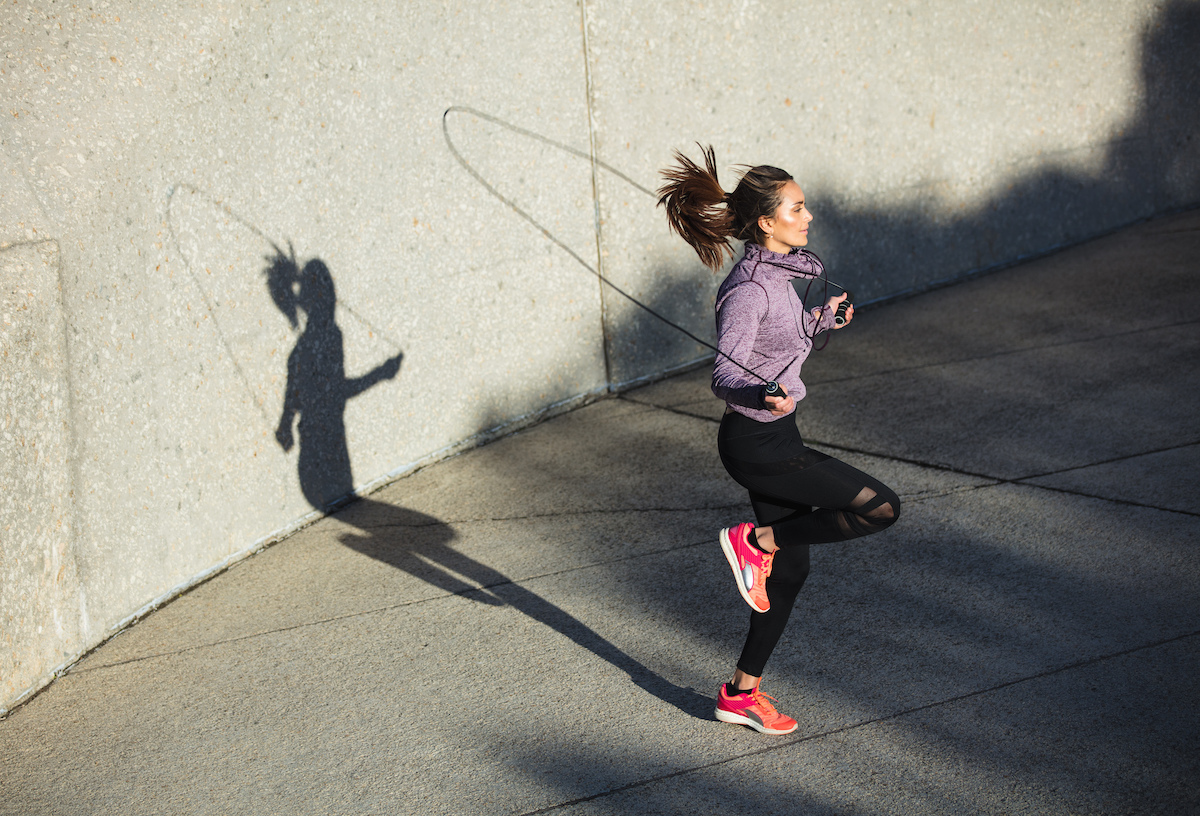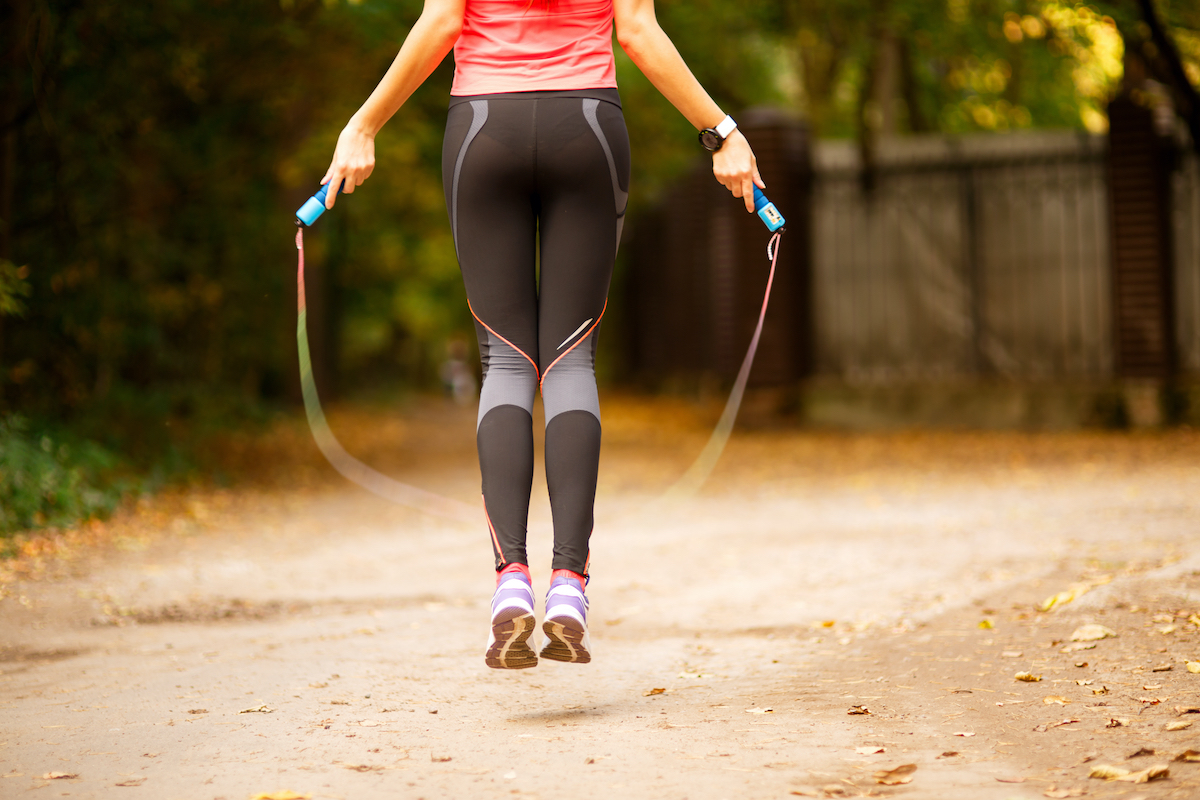Secret Side Effects of Jumping Rope More, Say Experts

If you think jumping rope is a sunny-day activity better suited for young children, you have so much to learn. After all, there's a reason that jumping rope has been the preferred form of cardiovascular exercise for world-champion boxers since long before Rocky graced theaters.
Skipping rope is a fantastic full-body workout that improves stamina, balance, and even mental toughness. Perhaps best of all, it's one of the all-time cheapest exercises you can do, which you can do literally anywhere. (Top-of-the-line ropes on Amazon retail for less than a packet of socks.) And given the intensity of the exercise, it's something you can do in a short amount of time.
Now, there are some negative side effects associated with jumping rope. If you're someone who suffers from heart disease, high blood pressure, or asthma, you may wish to avoid this highly intense aerobic form of exercise that will really challenge your heart and lungs. "If you're 50 pounds overweight and haven't been exercising, this isn't how I'd start," Tim Church, MD, MPH, Ph.D., a professor at Louisiana State University's Pennington Biomedical Research Center, once explained to Time. (And, yes, it can result in injury if you're not careful—poor form can lead to sprains, and, if you're not paying attention, you can definitely leave a mark on your legs.)
But if you're game, know that what follow are just a few of the amazing side effects of jumping rope that you probably didn't know. So turn up the Survivor and read on—and for more great exercise advice, don't miss the 5-Minute Fat-Melting Workout That's the Single Best Way to Start Your Day.
It Centers the Mind, Relaxes You, and Improves Your Focus

Yes, jumping rope will work your wrists, arms, legs, calves, and core, but it also works your brain, as well—especially as you get better and can try more complicated jumping moves. As Rachel Jablow, a NASM-certified personal trainer and jump-rope instructor in Chicago, recently told The Washington Post, jumping rope is the equivalent to "moving meditation."
"If you're not present, you're going to trip," she said.
Anyone who has jumped rope for exercise can tell you that, at some point very early on, you find yourself in a "flow"—when you're not thinking so much about your form or technique, but you're feeling the rope fly around you, your body fighting gravity, and you find that your mind is present in the moment. "I always find my zone when I start jumping rope," Maggie Mosbarger, PT, an instructor at New York's Punk Rope told Self. "Once you hear the rhythm and get into your groove, you can get lost in that." And for more life-changing exercise advice, see here for the Secret Exercise Tricks for Keeping Your Weight Down for Good.
It Makes You a Better Athlete

Whether you play tennis or basketball, golf or soccer, jumping rope teaches you proper balance and coordination that spill over into your favorite sports. "Jumping rope teaches players to stay on the balls of their feet, as opposed to being flat footed or on their heels," notes the Jump Rope Institute. "And since you are on your toes the entire time you jump rope, you will find that staying quiet on your toes when playing tennis will become easier and second nature."
According to a study published in the Journal of Sports Science & Medicine, young soccer players who jumped rope better improved their motor coordination than those who only performed the sport-specific drills. And for more clever ways to work your muscles more every day, don't miss The Secret Trick for Getting Fit Using Your Toothbrush.
It Really Works Your Heart, Burns Calories, and Melts Fat

"It's the best cardio you could ask for," Nick Woodard, a 14-time world-champion jump-roper, explained to WaPo.
According to the calculations at Science Daily, jumping rope has a "burn rate" that comes to roughly 1300 calories per hour, "with about 0.1 calories consumed per jump…. Ten minutes of jumping rope can roughly be considered the equivalent of running an eight-minute mile."
According to the health experts at Harvard, that's a higher rate of burn than rowing, cycling, and weight lifting. And for more great exercise advice, see here for The 15-Second Exercise Trick That Can Change Your Life.
It Builds Coordination and Balance

Given that so many of your muscle groups need to perform in sync to skip rope properly—including your hands, feet, and even your eyes—jumping rope improves coordination and overall balance. "Jumping rope is a cyclic activity, which means you perform it for a steady, regular cadence," write the fitness experts at ACE Fitness. "The steady cadence and rhythm of jumping rope can help improve the coordination between your eyes, feet and hands."
It Builds Bone Density

As Jablow explained to WaPo, jumping rope will over time improve your bone density and help protect your body from osteoporosis, when your bones become weak and porous over time. According to a study published in The Journal of Applied Physiology, women who jumped three times a week for just 10 minutes at a time for six months increased the bone density in their legs.
It Slashes Your Risk of Leg Injury

"Calf raises can strengthen the lower leg, but if the muscle tissue becomes too tight it could increase the risk of a number of lower-leg injuries including achilles tendon strain or plantar fasciitis," says ACE Fitness. "Jumping rope regularly strengthens the calf muscles and improves the elasticity of the surrounding tendons and fascia. To increase elasticity, try to land on the ball of the foot first, but let your heels go all of the way down to the ground."
How to Get Started

As Chloe Woo, PT, a trainer in LA, explained to WaPo, it's good to start with shorter sessions that are less than 10 minutes in order to build up your skills and get familiar with jumping rope. Do two to three times per week, "increasing your duration by no more than 10 percent every week or two."
A great beginner workout would be five minutes in which you jump for 20 seconds, rest of 20 seconds, and repeat. As for form, it's best to keep your elbows locked into your body at all times, and always land on the balls of your feet. And for more great exercise advice, don't miss the One Surprising Exercise Trick for Losing Belly Fat After 50, Says New Study.








